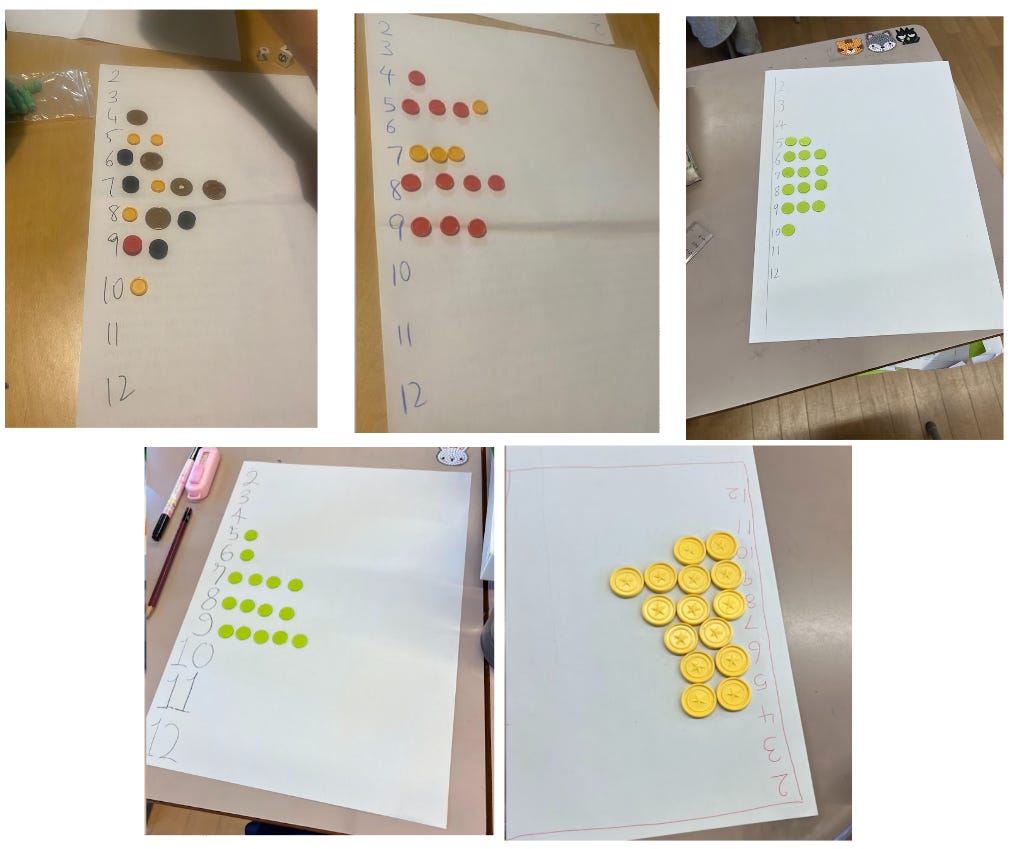This month, my 7th grade students are diving into the world of probability. One of our favorite activities is rolling two dice and exploring the different possible sums. Here is a table to show the sample space:
While searching for simulation options regarding this event, I saw this game on Cognitive Cardio Math blog. The game is simple, but great for exploring probabilities. Therefore I tried it in class of course.
Draw a simple board with numbers 2 through 12.
Students are given 15 chips (coins). They place the chips as they wish on the board next to the numbers. Here are some examples:
Teacher rolls two dice and students find the sum.
If they have a chip next to that sum, then they will move it away from the board.
Teacher keeps rolling two dice, and whoever clears the board first, wins the game.
Firstly, the game was quite engaging. Students did not feel how the period ended. We played it three times during a 40-minute period.
Students placed the chips randomly in the first game.
During the first game many students discovered that 9s, 5s and 7s come more often. Some complained that the dice were biased to give some numbers each time. We changed dice few times.
In the second game, I observed that many students placed the chips more on the center.
At the end of the third game, many students now understood that the center brings more chance to win the game. However, there were some confusion, too. Because, even though they put everything to the central locations, options like 2, 3 and 11 were keeping coming, too. After a group discussion, many concluded that the number of chips, 15, might have been the reason for not clear the board sooner.
Later we checked this Geogebra simulation where two dice were rolled 100000 times.
Remove one is a fun and engaging game. It is worth trying in class, helps discovering probability and sample space. It can be a good activity before teaching experimental probability or the law of large numbers.











